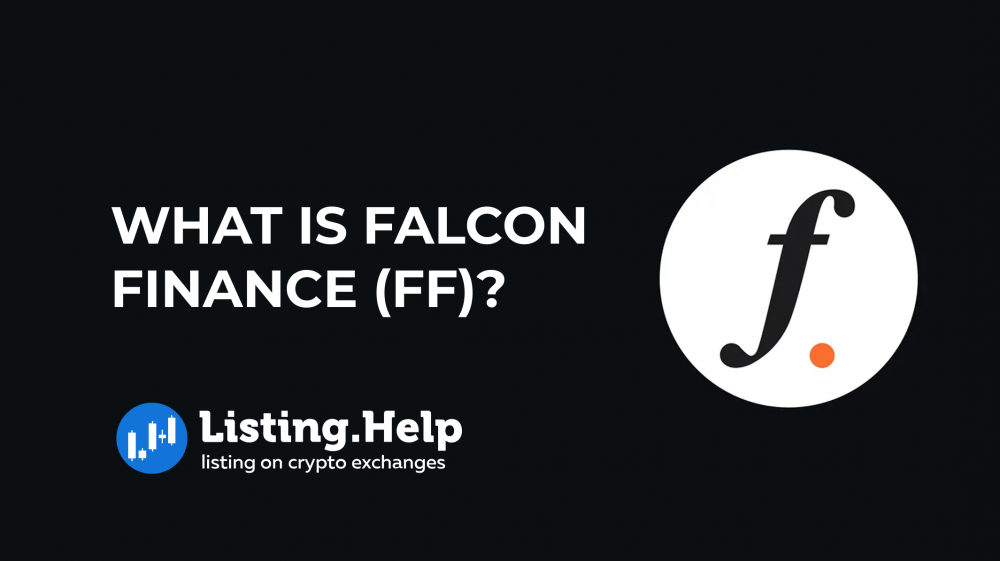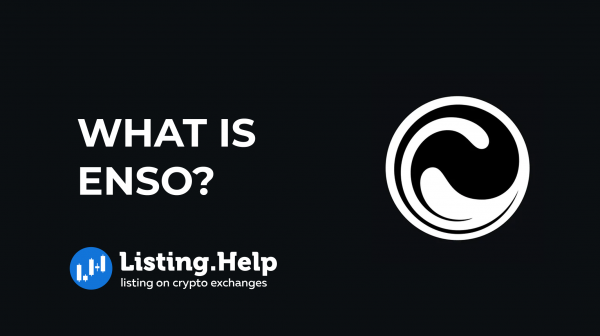What is Falcon Finance (FF)?
 November 1, 2025
November 1, 2025 Updated: November 1 2025, 02:56
Updated: November 1 2025, 02:56
LEAVE A REQUEST
Launching your own token project? Our experts are ready to help with listing on exchanges, market making, marketing and other solutions
SUBMIT APPLICATIONFalcon Finance is a decentralized system built to support asset collateralization and yield generation through synthetic assets. By depositing stablecoins or other approved tokens, users can mint USDf — an overcollateralized synthetic dollar. Once minted, USDf can be staked to create sUSDf, a token that increases in value over time, or locked for fixed periods to earn higher yields.
To protect user deposits, Falcon Finance partners with external custodians that employ multi-signature approvals and multi-party computation (MPC) systems. In addition, participants must complete KYC and AML verification to ensure compliance and enhance platform security.
How Falcon Finance Works?
USDf
Falcon Finance provides two ways to mint USDf: Classic Mint and Innovative Mint. Classic Mint allows stablecoin deposits such as USDT or USDC to generate USDf at a 1:1 ratio. When using volatile assets like BTC or ETH, additional collateral is required.
Innovative Mint caters to users depositing non-stable assets for a defined term. It enables them to mint USDf while still holding limited upside potential if their collateral appreciates. The USDf output depends on the lock-up duration and asset profile, maintaining full overcollateralization.
Each USDf token is backed by collateral exceeding its issued value. The protocol applies market-neutral strategies to preserve price stability, minimizing exposure to directional market risk.
sUSDf
When users stake USDf into Falcon’s vaults, they receive sUSDf — a yield-bearing asset linked to the protocol’s earnings from trading, staking, and liquidity strategies. As these activities generate returns, the exchange rate between sUSDf and USDf gradually increases, reflecting accumulated gains.
Falcon offers flexible and fixed staking options. The Classic Yield model allows users to earn without a lock-up and withdraw anytime. For higher yields, users can move their tokens into Boosted Yield Vaults with fixed terms, such as three or six months.
Each locked staking position is represented by an ERC-721 NFT that records the amount staked and duration. When the period ends, users can redeem the NFT for their sUSDf plus accrued yield.
Basic Process
- Deposit assets: Connect a verified wallet and deposit stablecoins or supported assets. Stablecoin deposits mint USDf at parity, while non-stablecoin assets require extra collateral.
- Mint USDf: Once verified, the system issues overcollateralized USDf tied to the deposited assets.
- Stake USDf: Deposit USDf into Falcon vaults to mint sUSDf and begin earning returns.
- Restake for higher yield: Lock sUSDf for set terms to access higher returns, tracked via NFTs.
- Redeem: Unstake sUSDf back to USDf, then exchange USDf for stablecoins. For other assets, collateral is released after a cooldown period.
Risks and Precautions
Users should be aware that Falcon Finance, like all blockchain systems, carries inherent risks. These include technical failures, cyberattacks, market instability, and possible depegging, where USDf may drift from its target value. Liquidity shortages or regulatory shifts could also affect performance.
Operational disruptions — such as system errors or network outages — may temporarily affect access. Since Falcon relies on external custodians, assets transferred off-chain are managed independently and outside the protocol’s direct control.
Risk Management
Falcon mitigates risks through automated systems, active monitoring, and trading strategies designed to reduce exposure to sudden price changes. The platform balances liquidity by keeping part of its reserves readily available while managing riskier assets more conservatively.
If a stablecoin starts losing its peg, Falcon can hedge or exit that position to contain losses. The protocol also maintains an on-chain insurance fund to act as a reserve during high-volatility periods and to stabilize USDf markets when needed. These measures help reduce risk but cannot remove it entirely, so users should assess their tolerance before participating.
What is the FF Token?
FF is the native asset of Falcon Finance, with a capped supply of 10 billion tokens. It serves several purposes:
- Governance: FF holders can vote on protocol proposals, upgrades, and policy changes.
- Incentives: Holding or staking FF can unlock benefits like better yields, lower collateral ratios, and reduced transaction costs.
- Ecosystem rewards: A portion of FF is distributed to participants who mint, stake, or engage with DeFi integrations.
- Access: Token holders receive early access to upcoming products, including advanced yield vaults and structured minting tools.
The FF token is listed on many platforms, including XT, HTX, CoinDCX and Upbit. If you’re looking to list your token on similar platforms, understanding the token listing process and crypto exchange listing fees is essential.
Conclusion
Falcon Finance delivers an ecosystem for asset collateralization, synthetic dollar creation, and yield generation. Through products like USDf, sUSDf, and NFT-based staking, it enables users to put their digital assets to work while maintaining exposure to them.
Although the protocol offers various yield opportunities, it operates within the high-risk environment of digital finance. Market volatility, liquidity issues, and technical vulnerabilities remain possible. Participants should evaluate these risks carefully and use only funds they can afford to lose.

For more insights and updates on the crypto world, don’t forget to check out our blog at Listing.Help.







 November 24, 2025
November 24, 2025 








